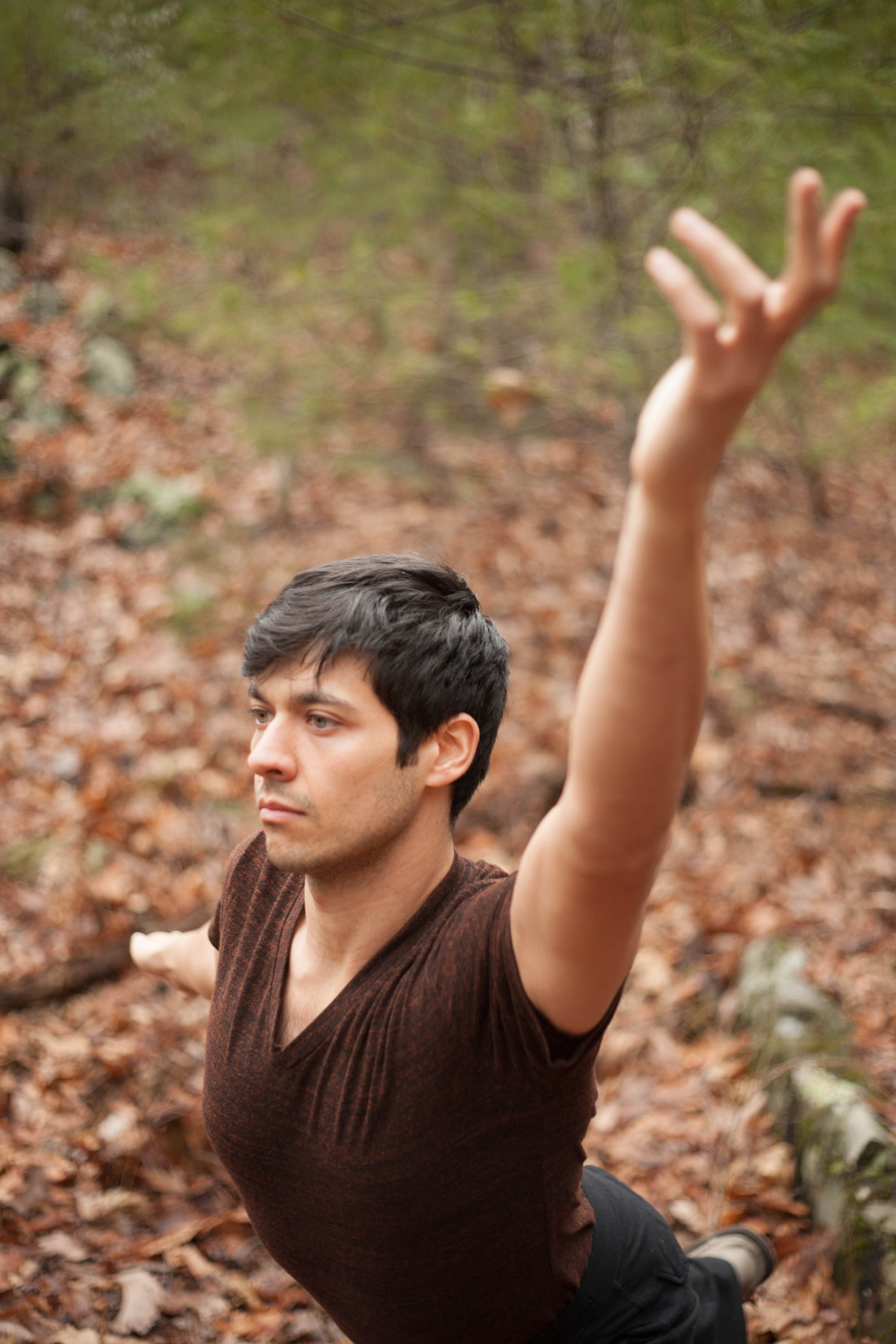Like proverbial peanut butter and jelly, yoga pairs perfectly with other healing modalities, according to several local yoga teachers. With countless yoga classes being offered daily in studios and public spaces around Asheville and Western North Carolina, these creative yogis are diversifying.
Xpress talked with five yoga teachers who have infused their yoga classes with complementary healing or movement practices to create a unique yogic experience. Rich Fabio draws from healing modalities across cultures — especially the ancient Chinese practice of qi gong — to create a class he calls “roots” yoga.
Rich Fabio — roots yoga
Xpress: How do your roots classes incorporate other modalities?
Fabio: I think of roots classes like moving meditations. I call all my classes ‘roots,’ meaning we draw from healing modalities across cultures that involve movement. Qi gong, [an ancient Chinese practice focused on postures and breathing techniques] and yoga have been around for ages and are still fresh and alive, providing health and wellness for a person’s mind and body. Some classes I teach have more yoga, some more qi gong, but the line is becoming more and more blended. Roots is also about feeling more embodied, more grounded and centered. The movements and poses are designed to help participants in their self-care.
Many students come to my class to get a break from their day and to get out of their heads. … It is hard to have a wandering mind in Roots classes — there are lots of ideas to engage with.
All my qi gong experience has been about feeling an inner experience that is reflected in the actions and quality of the outer movement. I use that flow-like movement to shape and transition the yoga poses for the class.
What makes these two modalities from two distinct traditions well-suited for each other?
Fabio: Qi gong and yoga are well-suited for each other because they have similar context in their respective cultures. Qi gong, originating in China, is an ancient healing art studying chi. Yoga, originating in India, is an ancient healing art studying prana. Chi and prana are kind of like George Lucas’ “the force” from Star Wars. But in China and India, chi and prana are not sci-fi fantasy concepts; they are well-known common household terms and are cultivated daily by qi gong practitioners and yogis. Now, I personally have never seen anyone float an object or shoot lightning bolts from their fingers with chi or prana, but I have observed both my own and others’ improved health, vitality and well-being. Chi and prana in one’s life bring back that childlike curiosity and aliveness, a playfulness, a lustre to the eye.
Can you share a bit about your background and what inspired you to teach this style of yoga?
My yoga and qi gong path really began with meditation. Meditation worked for me, and it came naturally, but while I could sit in stillness for long periods of time, my body began to ache. I had poor posture and chronic low back pain. My guru told me to learn yoga and to take care of my body. I listened. Having the meditative background made my approach to yoga very inward and breath centered; my body pain quickly decreased. Studying qi gong came about naturally as I observed qi gong practitioners move so gracefully and meditatively. It reminded me of my yoga practice. At this point, I was already teaching yoga, and over time, my growing passion and interest in qi gong spread from my personal practice and into my teaching as well. My students and I are having incredibly positive results with the blend.
My yoga practice is strengthening and the Qigong gave me a way to relax into that strength. It feels like the right direction for our community. It is pretty simple, the average American sits for 9 hours a day. The Roots fusion allows us to modify the qi gong and yoga movements to counter the sitting culture we find ourselves living in. I am passionate about living better for myself and others.
Learn more about Roots Yoga at richfabioyoga.com. Fabio teaches at Asheville Yoga Center, Urban Dharma and Town and Mountain Training Center.
Stay tuned for more interviews with local yoga teachers.




Before you comment
The comments section is here to provide a platform for civil dialogue on the issues we face together as a local community. Xpress is committed to offering this platform for all voices, but when the tone of the discussion gets nasty or strays off topic, we believe many people choose not to participate. Xpress editors are determined to moderate comments to ensure a constructive interchange is maintained. All comments judged not to be in keeping with the spirit of civil discourse will be removed and repeat violators will be banned. See here for our terms of service. Thank you for being part of this effort to promote respectful discussion.